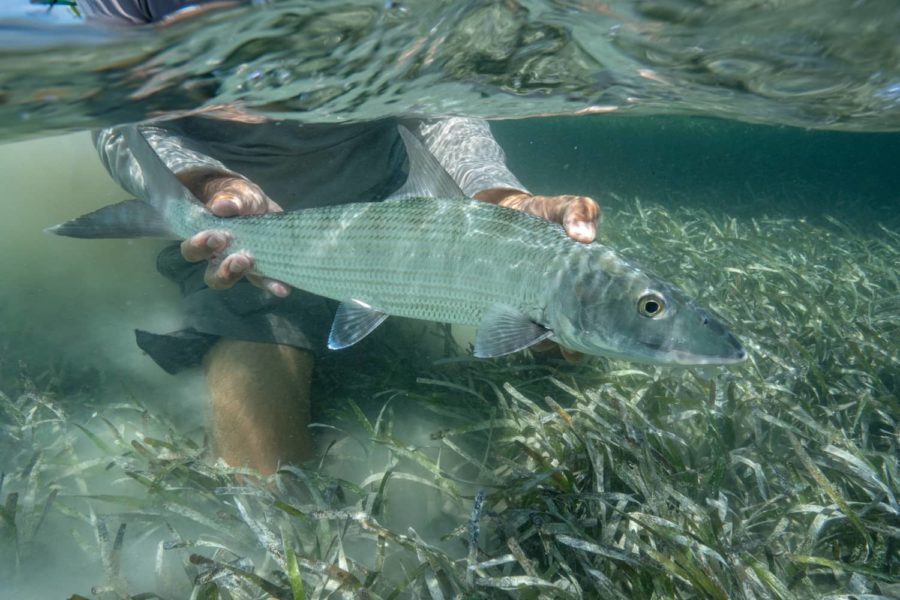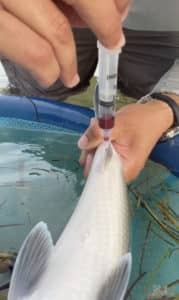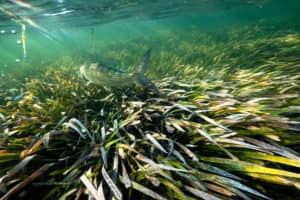Thrive
New study shows Florida’s bonefish are full of pharmaceuticals

A recently completed three-year research study has uncovered a preponderance of pharmaceuticals in Florida’s dwindling bonefish population, posing a significant threat to the state’s saltwater fishery, which provides a $9 billion annual economic impact and directly supports 88,500 jobs.
Commissioned by the Bonefish & Tarpon Trust and conducted by researchers at Florida International University’s (FIU) Coastal Fisheries Lab, the study analyzed 93 South Florida bonefish for 104 commonly prescribed human medicines. From Biscayne Bay to Key West, in both urban and remote areas, every fish they tested contained pharmaceuticals.
Researchers found a total of 58 different drugs in the fish, with an average of seven per fish. One bonefish contained 17 pharmaceuticals. Dr. Aaron Adams, director of science and conservation for the Bonefish & Tarpon Trust (BTT), said he was astounded by the number of medications found in the fish.
“If you walked into your local pharmacy with a sheet of paper with seven pharmaceuticals on it from your local doctor, your pharmacist would freak out,” said Adams. “I can’t imagine what the behavioral and biological effects are on these fish.”
Dr. Jennifer Rehage, a fish ecologist from FIU, and a Ph.D. candidate, Nicholas Castillo, conducted the study. Adams said BTT commissions and funds research to address knowledge gaps in fisheries and habitats and applies the findings to policy management.

One fish contained 17 different medications. Photo by Nick Castillo.
Before the pharmaceutical research project, Adams worked with Dr. Rehage to assess contaminates such as copper and pesticides found in fish throughout the Florida Keys. After noticing disruptions in the spawning process for fish, they decided to also test for medications. Samples of those fish were sent to Rehage and tested positive for pharmaceuticals, and the team embarked on the three-year study.
While the project focused on bonefish in South Florida and the Keys, Adams said the pharmaceuticals reach the fish via wastewater systems that are present throughout Florida.
“Our findings are formative for many other species,” said Adams. “Even though we’re focusing on bonefish, the findings of bonefish have policy implications across the board for the state.”
Adams pointed out that Florida’s $9 billion recreational saltwater fishery, along with a flats fishery worth over $465 million alone, is already at risk due to an increase in pollutants. He said wastewater treatments, stormwater runoff and fertilizers have contributed to Florida losing around 9 million acres of wetlands and coastal habitats.
“Even before we learned about the pharmaceuticals, we know that our fish are working at a deficit trying to survive with less habitat and waters,” said Adams. “Adding pharmaceuticals to that is just another layer of adding salt to the wound.”
Adams said pharmaceuticals change the behavior of fish, and antidepressants – one of the most commonly detected medications in bonefish – make the fish less cautious. The drugs also cause the fish to wander off alone when migrating to spawning locations, both of which make them more susceptible to predators and disrupt their reproductive cycles.
Court Douhit, a fishing guide with Dunedin-based Recreation Specialists, recently went angling with Adams and believes the fish around Tampa Bay are also riddled with pharmaceuticals. He said the damage caused by people flushing their medications, unproperly treated urine reaching seawater and wastewater runoff could devastate his livelihood.
“In the short term, it changes their eating habits – they’re more aloof, and there are different things that can happen,” said Douhit. “But then, in the long term, it’s the potential collapse of a fishery that affects every Floridian’s income.”
Douhit said there is a decline in the local fishery, and the study makes him question whether it is due to the preponderance of pharmaceuticals in the fish.
“I don’t think there’s a guide out there that will say in the last 20 years we don’t have less fish,” he said. “I’ve been fishing this area for over 20 years, and I absolutely see a decline in the fish.”
Not only does Douhit believe the number of medications found in bonefish is present in other species, but he would also like to see a study conducted on scallops. He explained that scallops congregate near freshwater flows, such as the rivers that dot Florida’s west coast. As filter feeders, they would be especially susceptible to contaminants in the water.
While the study confirmed researchers’ worst fears about the levels of pharmaceuticals in Florida’s fish, there are still many unknowns. Adams said although most of the drug concentrations were below what is considered therapeutic levels in humans, it is unknown what effect chronic low dose exposure has on people that regularly consume local seafood.

The Bonefish & Tarpon Trust hopes to conduct further studies on different species of fish throughout Florida. Photo by Ian Wilson.
Adams also pointed out that tainted water from septic systems and runoff inevitably reaches the state aquifer, and the levels of pharmaceuticals in drinking water also remain unknown.
“So, I think it’s important to frame this as the first study that’s giving us a warning that we need to look a lot deeper in a timely fashion at all these other possibilities,” he said.
Adams said researchers completed the study in the last couple of months, and scientists in Sweden are working on the final lab analysis. Rehage is working on a report for publication in a scientific journal, and BTT is allocating funding for a study on other fish species in Florida.
Adams said the state legislature appropriated funding for upgrading wastewater infrastructure, which he called a good start. Adams now hopes lawmakers in Tallahassee and local officials throughout the state will further increase their investments in wastewater infrastructure for the long term.
“With the amount of development that’s going to occur, we better get our act together now,” he said. “So that development moving forward is done in a way that prevents this kind of problem from compounding.”







